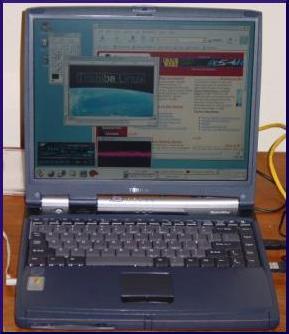Processor
|
Mobile Intel Celeron 1.06GHz, 256KB L2 Integrated
Cache
|
Chipset
|
Intel 830MG
|
Memory
|
256MB SODIMM, PC133 SDRAM, 3.3V (expandable to
512MB)
|
Hard Drive
|
15 GB Toshiba MK1517GAP
|
Floppy Drive
|
Modular 3.5" 1.44MB
|
DVD-ROM Drive
|
Modular DVD-ROM drive
|
Graphics Adapter
|
Intel 830MG 8MB integrated controller
|
Monitor
|
14.1" TFT LCD
|
Modem
|
Toshiba Lucent/Agere AMR integrated V.90/56K winmodem
|
Sound
|
Crystal CS4299-A Codec
|
PC Card Support
|
Two 32-bit CardBus ready PC Card slots, supports
2 Type II or 1 Type III PC Card. |
External Ports
|
Three USB ports, 1 ECP parallel port, 1 RGB port.
|
Sound Ports
|
Headphones, microphone (input), line (input)
|
